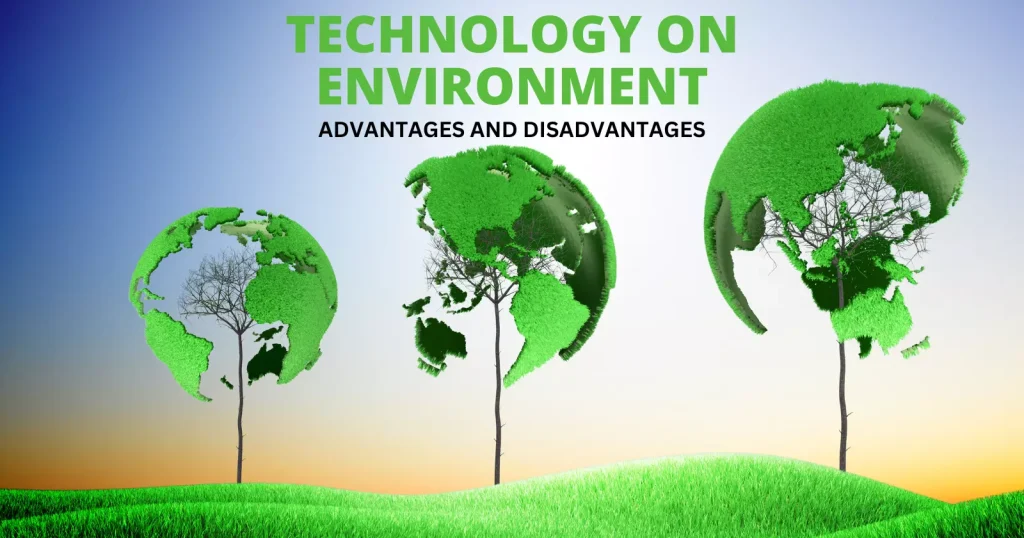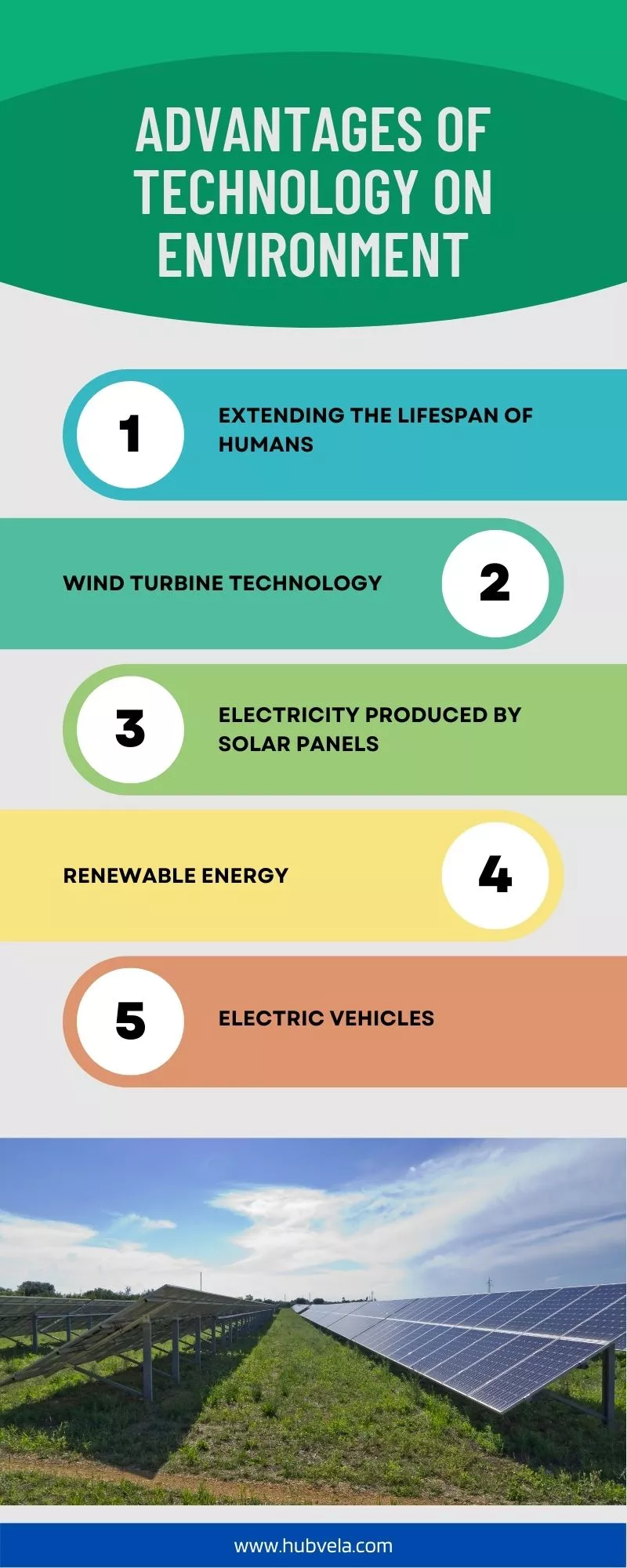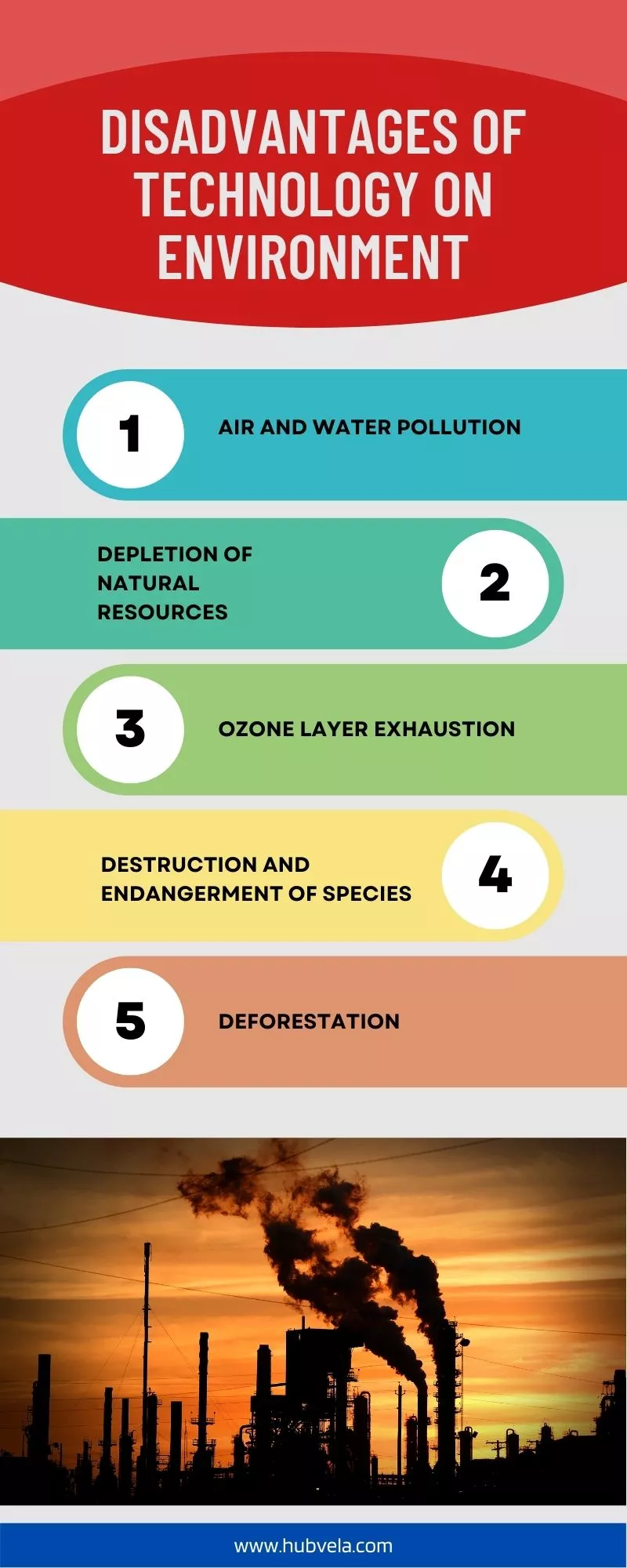The advancement of technology has brought about great benefits to many aspects of modern life, yet its environmental impact is a contentious point of debate.
The advantages and disadvantages of technology on the environment are multifaceted and can vary drastically depending on the particular application.
In this article, we will discuss how does technology affect the environment negatively and positively.
From renewable energy sources to air pollution, technological advances have both positive and negative effects that must be weighed carefully before implementation.
For example, sustainable energy sources such as wind turbines or solar panels may vastly reduce our dependence on non-renewable resources like fossil fuels while providing cleaner power with fewer emissions.
Yet, in some cases, these technologies still require large amounts of land which could potentially disrupt ecosystems or take away from other areas for recreational activities.
Additionally, rapid technological advancements can lead to an increased demand for rare materials such as copper or silicon which must be mined out of the ground harming delicate habitats and animal populations in the process.

--Advertisement--
Advantages of Technology on the Environment

1. Extending the lifespan of humans
Many of us have heard the exciting news that technology is helping to extend our lifespans, but what does this really mean?
In reality, when we talk about the lifespan of humans being extended by technology, it means much more than simply living longer. It implies that those extra years are filled with better health and a higher quality of life.
The impact of technological advances on human life expectancy is complex—and revolutionary. Technological developments in healthcare have given us access to advanced medical treatments for a variety of conditions, from cancer to heart disease.
These treatments have enabled many people to live healthier lives for longer periods and enjoy improved health even in later years.
Additionally, technological advancements such as robotics and artificial intelligence are allowing people to remain independent for longer despite age-related impairments or disabilities.
2. Wind Turbine Technology
Wind turbine technology has revolutionized the way we generate renewable energy. This innovative technology has many advantages that make it a viable option for powering our homes and businesses across the globe. From its cost-effectiveness to its eco-friendly credentials, wind turbine technology offers numerous benefits.
The most striking advantage of this type of renewable energy is its affordability compared to traditional sources such as oil, gas, and coal. Wind turbine power can be generated relatively cheaply without any additional fuel costs since the resource is free and abundant in nature.
Furthermore, wind turbines are reliable energy providers since their performance is not affected by changing weather conditions like solar panels are. Additionally, they produce zero emissions during operation which makes them an attractive solution for reducing greenhouse gas emissions and improving air quality overall.
3. Electricity Produced by Solar Panels
The utilization of electricity produced by solar panels is a burgeoning phenomenon that can bring individuals and businesses a wide array of advantages.
These benefits have the potential to revolutionize the utility sector as we know it, providing an enriching experience for all those involved.
Solar photovoltaic (PV) technology allows us to capture energy from the sun in order to create electrical power with no emissions or waste.
This process is incredibly efficient, as any surplus energy produced can be stored and utilized when necessary, allowing for greater sustainability and reduced reliance on fossil fuels.
Additionally, with government incentives available to incentivize their installation, solar panels are becoming increasingly popular due to their cost-effectiveness both financially and environmentally.
4. Renewable energy
Renewable energy advantages are becoming increasingly evident, as the world transitions away from traditional sources of energy.
An array of benefits associated with renewable energy sources have been noted in recent years, prompting a surge in interest and investment.
From cost savings to environmental protection, renewable energies offer an attractive alternative for both businesses and households alike.
Utilizing sustainable power sources can help to reduce emissions, lower electricity bills and increase grid stability; not to mention the added bonus that it is infinitely replenishable.
The use of solar panels, wind turbines and hydroelectric plants provides an inexhaustible source of clean energy which is transforming the way we produce electrical power and meet our global energy needs.
Additionally, harnessing renewable resources also has economic benefits; creating jobs in the fields of research, engineering and installation while stimulating local economies as new technologies developed.
5. Electric vehicles
Electric vehicles are the driving force of a new, high-tech age. Their advanced technology has revolutionized transportation, providing people with unprecedented access to green energy solutions.
With the rise of electric vehicle technology, environmental sustainability is becoming more accessible and promising than ever before.
The advantages of electric vehicles are myriad. For starters, they provide a silent and emission-free ride; no fumes or pollutants means cleaner air for everyone!
On top of that, they are typically cheaper to maintain and operate than their gasoline counterparts.
Additionally, unlike traditional cars that require frequent trips to the gas station for refills, electric cars can often be charged at home overnight and have enough power to last for days at a time.
This cost efficiency can lead to significant savings over time – not only in terms of money but also in valuable time spent searching for fuel stations or waiting in line!
Disadvantages of Technology on the Environment

1. Air and water pollution
Air and water pollution, once largely a consequence of the industrial revolution, are now both caused by technological advances. As technology continues to evolve, so does the impact it has on our environment.
Not only is air pollution exacerbated by emissions from factories and vehicles but also from things like aerosols propellants and other substances that are released into the atmosphere from numerous sources including electronics, appliances and even construction materials.
Water pollution is equally concerning due to its ability to permeate through soil or sediment and find its way into rivers or groundwater systems.
This can lead to contamination of drinking water sources as well as agricultural land used for tending crops. Many kinds of pollutants pervade our waters such as oil spills, runoff from industrial wastewater facilities and even pharmaceuticals that have been improperly disposed of.
2. Depletion of natural resources
The relentless march of technology has had a devastating impact on the world’s natural resources, leading to their depletion in an alarmingly rapid fashion.
Human activity is the primary cause for resource loss, with our ever-growing desire for technology contributing substantially.
As our population continues to expand and technological advancements are made in all corners of society, we must consider how best to responsibly manage these dwindling supplies.
In today’s modern era, it is difficult to deny that technology has become an intrinsic part of our day-to-day lives.
Whether it be smartphones or computers, cars or airplanes – whatever way you look at it, the demand for new gadgets and innovations is continuously growing.
This heightened demand not only draws on resources directly but also requires more power and energy to fuel its production which consequently leads to further depletion of natural sources like oil and coal.
3. Ozone Layer Exhaustion
The ozone layer is a vital protection for human life and technology alike. As the years have gone on, it has become increasingly susceptible to damage from human activity.
The culmination of this destruction has resulted in intense exhaustion of the ozone layer, threatening the health of both us and our technology.
This exhaustion can be seen through the degradation of ultraviolet radiation filtering abilities caused by chemical compounds such as chlorofluorocarbons (CFCs).
Consequently, we are seeing an increase in ultraviolet radiation exposure, which could cause significant irradiation of both human skin and electronic components if left unchecked.
Thankfully, technological advances have allowed us to monitor the effects that humans have on the ozone layer – enabling us to take action before its too late.
4. Destruction and Endangerment of Species
The rampant destruction of wildlife and its consequential endangerment has been a growing concern among conservationists, environmentalists, and citizens alike. But what many overlook is the role that technology plays in accelerating this process.
The advancement of human knowledge has enabled us to exploit nature with ever-increasing speed and efficiency, pushing animals towards extinction before we have had a chance to fully appreciate them or even understand their purpose.
From nuclear weapons testing that devastates entire ecosystems to nanotechnology that creates microscopic particles which threaten oceanic lifeforms, it is clear that humans are capable of vast destruction through technological means.
We must be conscious of our power as innovators and become cognizant of how our creations can impact the environment around us – both positively and negatively – if we hope to protect endangered species from further decline.
5. Deforestation
Deforestation has become a modern-day bane for the planet, with its quandary of ecological consequences far surpassing any positive ramifications.
Current technology advancements have enabled us to effectively combat this insidious suffering of nature, albeit at a snail’s pace and often with the hindrance of human obstinacy.
The tropical rainforests are especially vulnerable, their invaluable resources getting depleted by lumberjacks and other extraction industries due to the lucrative value they possess.
The desecration of these lands not only diminishes their capacity to sustain life but also depletes our oxygen supply as well as threatens species extinction.
Technology is providing us with some hope in this regard through eco-friendly alternatives such as paperless offices and energy efficient transportation systems.
It is paramount that we embrace technology in order to mitigate the environmental damage caused by deforestation.
6. Wastage Produced by Technology
The technological revolution of the 21st century has been a cause for both celebration and consternation. On one hand, our lives have become more convenient and efficient due to technological advances.
Yet, on the other hand, it has come at a great cost—the cost of environmental wastage. It’s estimated that technology is responsible for around 80% of all global waste produced in the last decade; an astonishing statistic that should not be taken lightly.
Much of this wastage originates from technological components like batteries, wires and cables that are deemed unusable after their initial use or discarded when an upgrade becomes available.
Moreover, these products often contain hazardous materials such as lead, mercury and arsenic which can have detrimental effects on the environment if disposed of incorrectly.
Conclusion on Advantages and Disadvantages of Technology on Environment
In conclusion, technology can be both a blessing and a curse when it comes to the environment. It has enabled us to make leaps in innovation and sustainability, but it has also caused us to become increasingly dependent on machines and electronic devices which can have negative impacts on our planet.
Ultimately, we must strive for a balance between technology advancement and environmental stewardship, so that we can continue to enjoy the benefits of technology while protecting the environment for future generations.



Good am happy